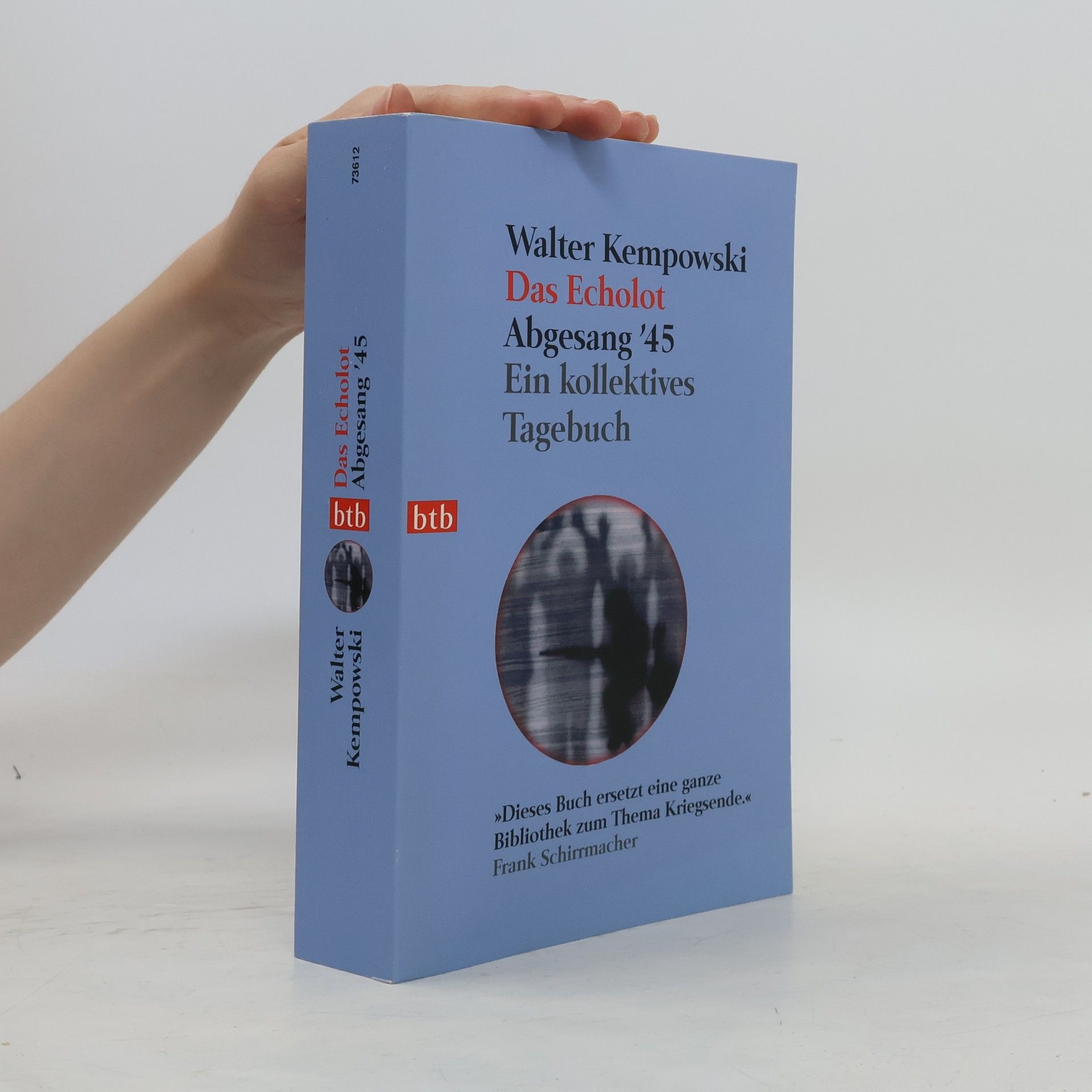Dans les années 1970, Walter Kempowski a posé dans son entourage une question simple et factuelle : "Avez-vous vu Hitler ?" Son enquête s'est animée d'une vie propre et il l'a poursuivie, jusqu'à interroger plusieurs centaines de personnes au gré de ses rencontres. Elle déboucha sur ce livre, qui connut de nombreuses éditions et fut un best-seller en Allemagne. Voici donc les réponses d'Allemands et d'Allemandes anonymes de toutes origines, tous âges, toutes appartenances sociales, qui, en quelques phrases, racontent où et comment ils ont vu Hitler, entre le début des années 1920 et 1945. On y saisit des bribes fortuites de ses débuts obscurs, on le voit devenir l'homme politique omniprésent des campagnes électorales incessantes sous la république de Weimar, et enfin un dictateur triomphant jusqu'à la guerre. On y découvre comment les Allemands ont vécu cette époque et comment ils vivent avec son souvenir dans les années 1970. En donnant leur réponse, sans en avoir l'air, ils en disent long sur eux-mêmes.
Walter Kempowski Livres
Walter Kempowski était un écrivain allemand, célèbre pour sa vaste série de romans "Deutsche Chronik" et pour l'œuvre monumentale "Echolot". Son travail se caractérise par une approche semblable à un collage, entremêlant souvenirs autobiographiques, lettres et documents de témoins contemporains d'événements historiques cruciaux. Kempowski a magistralement assemblé des fragments du passé en un tout littéraire captivant, explorant la mémoire collective et son impact sur les individus. Son écriture offre une lentille unique pour observer l'histoire allemande et les expériences humaines qui s'y déroulent.






Swansong 1945: A Collective Diary of the Last Days of the Third Reich
- 512pages
- 18 heures de lecture
The book offers a vivid portrayal of the final days of Nazi Germany through over 1,000 personal accounts, including letters and diaries from both civilians and soldiers. It captures four pivotal days in spring 1945: Hitler's birthday, the meeting of American and Soviet troops, Hitler's suicide, and Germany's surrender. This collection highlights the profound suffering and resilience experienced during the collapse of the Third Reich, providing a comprehensive perspective on the end of World War II in Europe.
All for nothing
- 343pages
- 13 heures de lecture
A wealthy family tries--and fails--to seal themselves off from the chaos of post-World War II life surrounding them in this stunning novel by one of Germany's most important post-war writers. In East Prussia, January 1945, the German forces are in retreat and the Red Army is approaching. The von Globig family's manor house, the Georgenhof, is falling into disrepair. Auntie runs the estate as best she can since Eberhard von Globig, a special officer in the German army, went to war, leaving behind his beautiful but vague wife, Katharina, and her bookish twelve-year-old son, Peter. As the road fills with Germans fleeing the occupied territories, the Georgenhof begins to receive strange visitors--a Nazi violinist, a dissident painter, a Baltic baron, even a Jewish refugee. Yet in the main, life continues as banal, wondrous, and complicit as ever for the family, until their caution, their hedged bets, and their denial are answered by the wholly expected events they haven't allowed themselves to imagine. All for Nothing, published in 2006, was the last novel by Walter Kempowski, one of postwar Germany's most acclaimed and popular writers.
An Ordinary Youth
- 480pages
- 17 heures de lecture
Set in Rostock in 1939, the narrative unfolds as the Kempowski family adjusts to their new apartment. It captures intimate moments during a family meal, a visit to the grandfather, and interactions with the neighbor's daughter, highlighting the dynamics of family life and the social environment of the time. Through these scenes, the story weaves together personal and communal experiences, reflecting the complexities of familial relationships against the backdrop of a changing world.
Swansong 1945
- 479pages
- 17 heures de lecture
Chronicles the end of Nazi Germany and World War II in Europe through hundreds of letters, diaries, and autobiographical accounts covering four days that fateful spring: Hitler's birthday on April 20, American and Soviet troops meeting at the Elbe on April 25, Hitler's suicide on April 30, and finally the German surrender on May 8. Side by side, we encounter vivid, first-person accounts of civilians fleeing Berlin, ordinary German soldiers determined to fight to the bitter end, American POWs dreaming of home, concentration-camp survivors' first descriptions of their horrific experiences, as well as the intimate thoughts of figures such as Eisenhower, Churchill, Stalin, Joseph Goebbels, and Hitler himself. These firsthand accounts, painstakingly collected and organized by renowned German author Walter Kempowski, provide the raw material of history and present a panoramic view of those tumultuous days, an extraordinary account of suffering and survival.--From publisher description. Contains primary source documents.
A sharply evocative novel of one man's journey into his family history and the troubled legacy of World War II, from the author of All for Nothing.
Tadelloeser & Wolff
Ein buergerlicher Roman
Der Angriff auf die Sowjetunion am 22. Juni 1941 war der Anfang vom Ende Hitlers. Zwischen Berlin und Moskau starben mehr Menschen als an allen anderen Fronten des Zweiten Weltkrieges. In seinem neuen Echolot-Band hat Kempowski Dokumente von russischer und deutscher Seite aus jener Zeit zu einer höchst bewegenden Collage verwoben. "Barbarossa '41" zeigt die Schrecken des Krieges aus wechselnden Perspektiven: menschenverachtende Politiker kommen ebenso zu Wort wie ranghohe Militärs, Intellektuelle ebenso wie einfache Soldaten und Zivilisten. Entstanden ist so ein erschütterndes Mosaik des Krieges über alle Grenzen hinweg.
Der abschließende Band des beispiellosen Echolot-Unternehmens. Es sind die hochdramatischen letzten Tage Hitlerdeutschlands, die Kempowski auf beklemmend eindringliche Weise wie einen Film vor dem Leser abrollen lässt. Die minutiöse Rekonstruktion aus Briefen, Tagebuchaufzeichnungen, Quellen und Bildern ermöglicht einen erschütternden Blick auf Leid, Propaganda, Irrsinn.
Walter Kempowski hat in jahrelanger Arbeit eine einzigartige Collage aus Briefen, Tagebüchern und Dokumenten geschaffen. Sie bietet eine minutiöse Rekonstruktion des Alltags und historischer Ereignisse während der Schlacht von Stalingrad, einem dramatischen Wendepunkt deutscher Geschichte.



